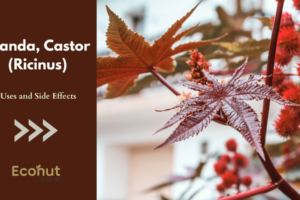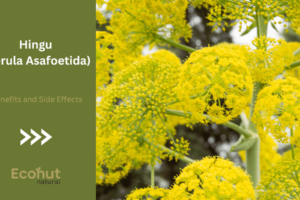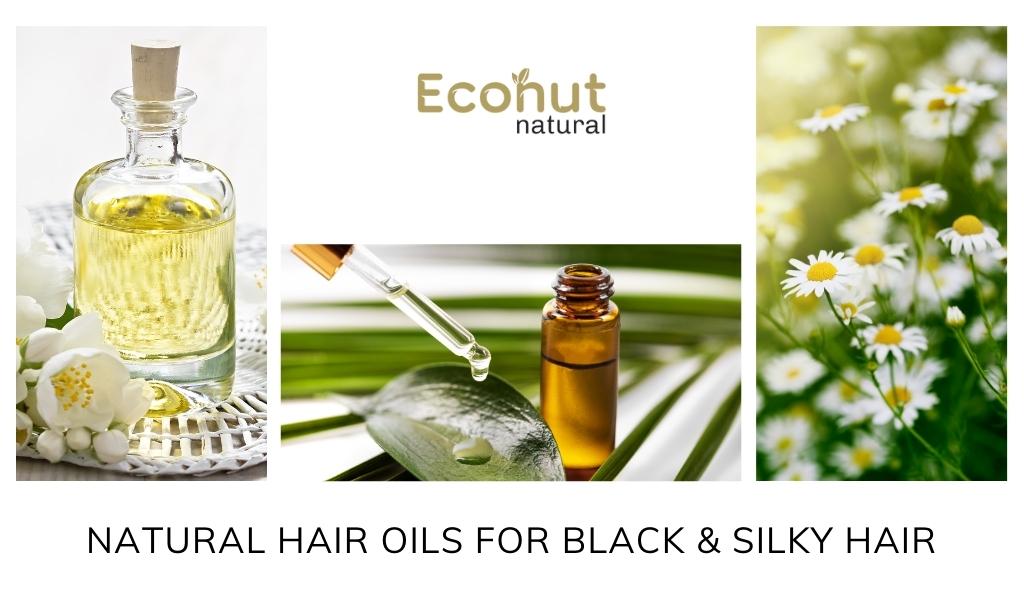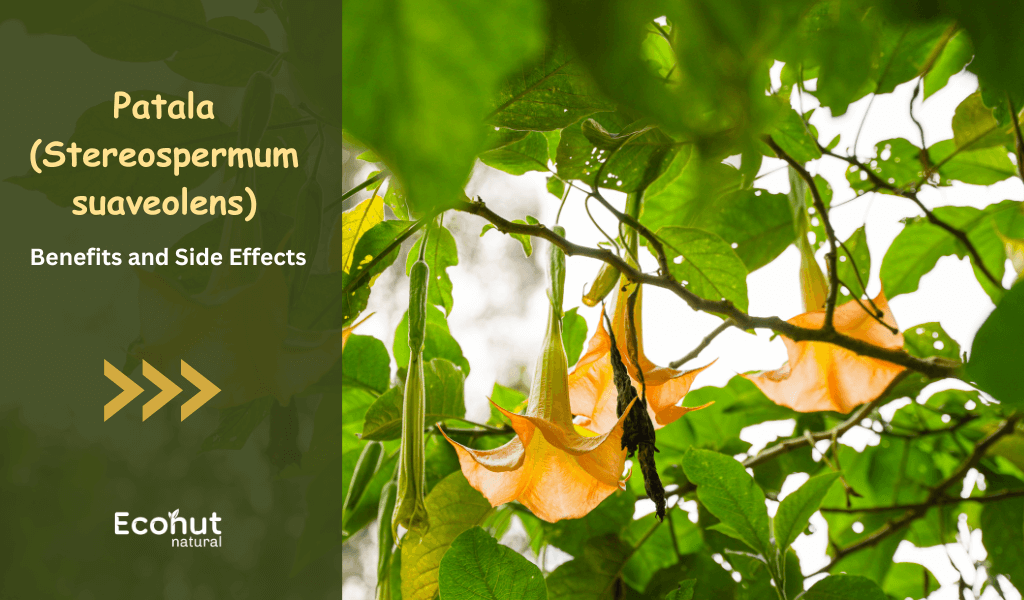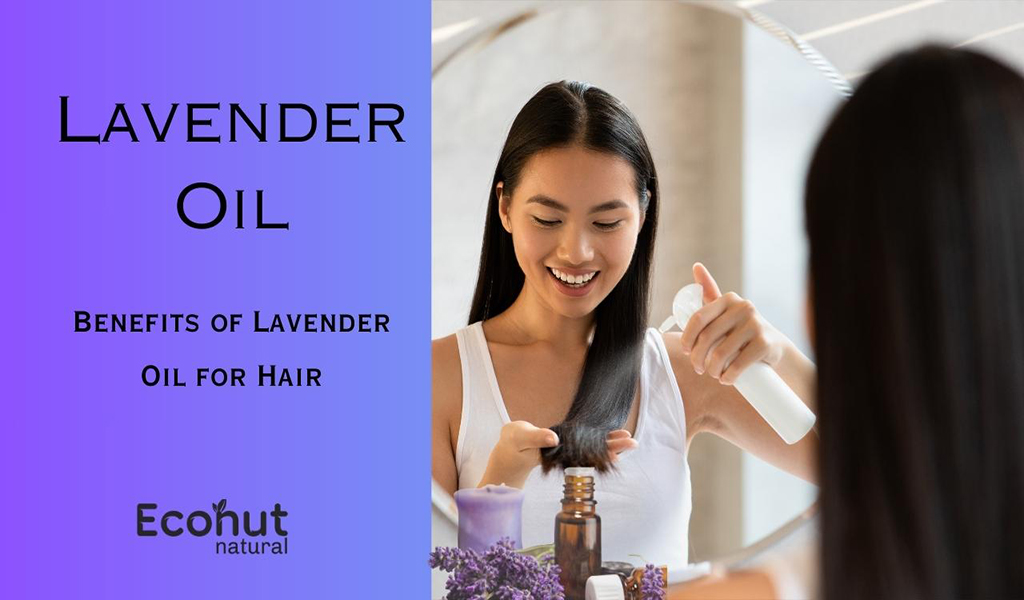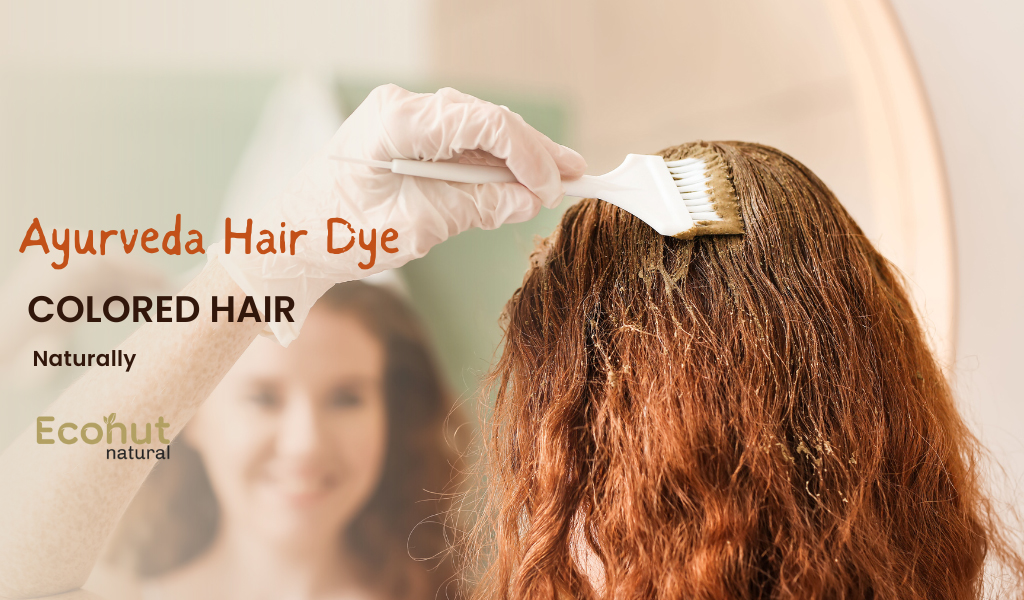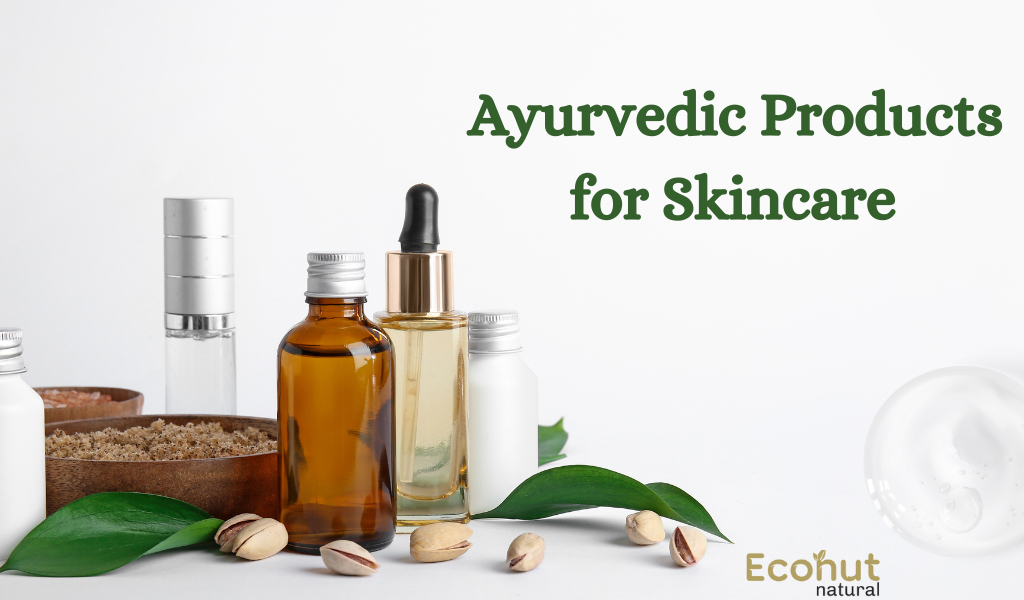Natural hair oil called jojoba is produced by cells around every hair follicle in humans. Similar oils, such as lanolin, are generated by other animals.
Artificial hair oils, like natural oils, may decrease scalp dryness by producing phobic layers that reduce the transepidermal loss and evaporation of water from the skin.
Oils also protect the cuticle layer of cells in the hair follicle and prevent chemicals like irritants from getting inside. Hydrogenated and mono oil enter hair far better than mono oils.
1. Curry leaves And Coconut Hair Oil
Curry leaves are high in antibacterial agents, they may help in hair thinning or loss. It stand-by for oxidative damage.
Coconut oil Softens and moisturizes the hair. Coconut oil can help minimize the loss of protein in all hair types.
Things you will need:
- Three tablespoons of coconut oil
- Curry leaves
Recipe:
- In a pan, mix three tablespoons of cold-pressed coconut oil with a small number of curry leaves
- Allow the mixture to cool after boiling it until it produces a black stain
- Put this oil in an empty container and keep it someplace cool
- Every time you want to utilize it, heat it just a bit.
How many times do this natural oil for hair?
Once a week.
How can it work?
Curry leaves with coconut oil This miracle oil strengthens your hair, provides suppleness, and restores the melanin level of the follicles. The vitamin B content improves the health and shine of your hair while also providing an enjoyable fragrance.
2. Amla Natural Oil For Hair
Boost the area around the scalp and hair. Reduce early hair color loss or greying.
Promote hair growth. Hair loss can be controlled. Dandruff and dry scalp may be managed or treated. Avoid or cure pathogenic hair and scalp infections, such as hair lice.
Things you will need:
Amla
Recipe:
- two amla fruits, cut into four pieces each
- then put them in a shaded area to dry
- Wait for at least an hour of drying time.
- To dry out the amla, add two tablespoons of sesame oil and four tablespoons of extra virgin coconut oil.
- Temperature the mixture on a low flame till it starts bubbling
- Leave it to cool down in the pan
- Put the mixture into a bottle that is dark and store it in an area that’s cool away from sunlight for a week before using.
How many times to do this?
At least in a week.
How can it work?
This natural hair oil can be used by men as well as women who suffer from weakened hair, early greying, or hair loss. It promotes hair growth, cools the scalp, and makes your hair shinier and thicker.
3. Onion Natural Oil For Hair
Continuous application of onion oil will effectively avoid or treat baldness. Onion oil is high in sulfur, so it helps to prevent hair breakage, split ends, and thinning.
Coconut oil may improve your hair’s well-being and condition. It enhances your appearance by preventing protein loss in your hair.
Garlic’s naturally antimicrobial and antifungal qualities may also contribute to hair benefits since these features can help kill bacteria and fight diseases.
Cloves are used for protecting the scalp from dandruff, which is the main cause of weak and hair loss. Cloves also have anti-inflammatory properties that aid in hair thickening.
Rosemary is full of radicals and anti-inflammatory components which encourage scalp growth and decrease the loss of hair. It also assists in the reduction of scalp irritation.
Things you will need:
- Coconut Oil
- Garlic
- Cloves
- Rosemary
Recipe:
- In a hot pan, cut up a small onion and add six tablespoons of coconut oil and Two
garlic cloves.
- Warm the mixture until it begins to boil
- Then leave it away to cool
- Three to four drops of the oil from lavender/rosemary
- Chill the entire mixture for at least ten days before using it.
How many times to do this?
- At least once a week.
How can it work?
Onions’ high sulfur content benefits in the therapy of a variety of hair diseases,
including baldness. It is also a powerful anti-bacterial and aids in managing the
symptoms of scalp infections. In addition, the combination of vitamins and mineral
balance strengthens hair roots, resulting in thicker and stronger hair.
4. Neem & Almond Oil
Neem oil is an organic byproduct of the neem tree, which is an evergreen plant native to India. The oil is made from the fruits and seeds of the tree.
Almonds are full of the fatty acids omega-3 and omega-6, helping to promote good blood flow and the growth of hair.
Things you will need:
- Neem
- Almond Oil
Recipe:
- For two full days, dry a few neem leaves.
- Bring one hundred milliliters of almond oil and dried neem leaves to a boil
- Take the leaves to soak for an entire week in the oil
- The hair production oil will become greenish during this period, suggesting that it has been well-infused
- The oil gets filtered and ready for use.
How many times to do this?
Two or three times a month.
How can it work?
Dandruff is possibly the most common hair problem and our grandmothers (obviously) had therapy. The amazing part neem and almond are high in antioxidants and fatty acids, as well as being antiseptic and therapeutic. These beneficial properties may maintain your hair free of dandruff.
5. Kalonji Seeds & Olive Oil
Kalonji oil, also known as black seed oil, contains nigellone and a medication called which stimulates the formation of hair while reducing redness and fungal allergies.
By maintaining the scalp well-hydrated, olive oil serves as an excellent moisturizer. It offers all the nutrients required to properly nourish and condition your hair.
Things you will need:
- Kalonji Seeds
- Olive Oil
Recipe:
- One tablespoon of kalonji seeds, chopped
- Add some olive or coconut oil to a container with the pulverized seeds
- Fill a bottle partly with powdered seeds and olive or coconut oil to make a paste
- Before using this oil on your scalp, warm just a little of it.
How many times to do this?
Once a week.
How can it work?
These seeds include important fatty acids, magnesium, zinc, iron, potassium, and vitamins A, B, and C, all of which support robust, hair that is healthy. Kalonji seeds, when combined with hair oil, not only increase hair growth but also heal and break condition the hair.
6. Peppermint Oil & Grape Seed Carrier Oil
In a single investigation, peppermint oil has been shown to improve the number of follicles, follicle depth, and overall hair growth in mice.
Grape seed oil is an oil that is utilized as a natural baldness remedy. Linolenic acid is thought to encourage the creation of hair. Procyanidin oligomers are flavonoids that exist in the oil. These are highly effective antioxidants.
Things you will need:
- Peppermint Oil
- Grape Seed Carrier Oil
Recipe:
- In a one-in-four ratio, mix peppermint oil and grape seed carrier oil
- Massage the entire thing into your hair for a few minutes
- After brushing your hair one time, wash it.
How many times to do this?
Once a week.
How can it work?
When accompanied by grapeseed oil, this revitalizing oil boosts blood flow to the scalp and strengthens the follicles.
7. Tea Tree Oil, Apple Side Vinegar & Cedarwood
One of the greatest important advantages of this oil is that it helps open up pores and avoid dandruff. It removes the hair follicles of material and dead skin cells while also excluding excess oil.
Apple cider vinegar’s cleansing qualities not only clean our hair and scalp, but they also help restore luster and shine to dull locks.
Cedarwood oil promotes flow to the scalp, thereby encouraging hair growth and strengthening follicles.
Things you will need:
- 1/4 (sixty milliliters) of apple cider vinegar
- 1/4 cup of water
- Seven drops of essential oil of cedarwood
- Seven drops of tea tree oil
Recipe:
- Tea tree oil, Cedarwood oil, and apple cider vinegar must be thoroughly mixed and kept in a spray container for hair growth
- Spray the entire mixture on the hair and stimulate the scalp gently for five to ten minutes.
- Leave your hair to dry naturally.
How many times to do this?
Three or four times weekly.
How can it work?
The combination of Apple Cider Vinegar, Tea Tree oil, and cedarwood assists in clearing hair follicles and has antiseptic and hygienic features, protecting the scalp from infections.
8. Camphor Castor Oil & Olive Oil
Camphor oil is emollient, which means it helps smooth the hair base and shrink frizz.
Castor oil is an organic conditioner that keeps your hair looking and feeling healthy, glossy, and silky.
For thousands of years, people have maintained that olive oil gives sparkle, body, smoothness, and durability to their hair.
Things you will need:
- Camphor Oil
- Castor Oil
- Olive Oil
Recipe:
- Take camphor oil, castor oil, and coconut oil in equal amounts
- And massage it through your hair and roots
- Preheat this hair growth oil before applying it to guarantee that it goes into the scalp quickly.
How many times to do this?
Three to four times a month.
How can it work?
The mixture of camphor is an extremely beneficial component for both skin and hair problems so it’s understandable that it’s an important part of Ayurveda and a favorite among the grannies. Camphor, which is high in antibacterial and antioxidant substances, repairs hair cuticles and feeds frizzy locks while offering volume and gloss.
9. Fenugreek (Methi) Natural Hair Oil
Methi seeds or fenugreek are believed to be great for your hair. These seeds are high in vitamins A, K, and C, among additional nutrients that may assist your hair.
Things you will need:
Fenugreek Seeds (Methi)
Recipe:
- Add half a cup of fenugreek seeds to a clean container
- You may also take advantage of these seeds after gently crushing them in a blender
- Next, add any organic oil of your choice to the container. You can choose between olive, coconut, or jojoba oil
- Cover the jar and keep it in an area that is dry and cool for three to four weeks
- Over time, the oil will start to thicken
- By applying a mesh grater or cheesecloth, strain the oil to what you want.
- Discard the seeds from fenugreek.
Note:
Refill a new bottle of fenugreek oil. This bottle should be stored in the refrigerator, and the oil may be applied for up to a month. If you see the oil getting cloudy, it is no longer safe to use.
How many times to do this?
Once a month.
How can it work?
Methi seeds are also filled with minerals like iron, calcium, and potassium, which can help recover many kinds of hair-related issues like baldness, dryness, and hair loss.
10. Hibiscus Natural Oil For Hair
Hibiscus has an array of valuable materials that aid in the prevention of hair loss and hair loss. The liquid form of hibiscus leaves and flowers, which is high in vitamin C, flavonoids, amino acids, mucilage fiber, and vitamins and minerals, nourishes your hair, supports the formation of hair, and provides it with a smooth and silky feel.
Things you will need:
- Hibiscus Flower
- Coconut Oil
Recipe:
- Make a paste using eight to ten hibiscus flowers and leaves
- Subsequently, boil a cup of coconut oil and mix in the paste
- Boil the entire mixture for Two-three minutes. and cover with a lid
- Put it away to cool
- Your hibiscus oil is prepared. It’s possible to simply filter it or use it as is to create a clear oil.
- Massage hibiscus oil onto your scalp for ten minutes and leave for 30 minutes
- You can leave the product on overnight and wash it off the next day.
How many times to do this?
At least once a week.
How can it work?
Hibiscus enhances blood circulation, thickens hair follicles, and provides nourishment to the scalp. Regular use of hibiscus oil builds more substantial, healthier hair.
Side effects of natural Hair Oil:
An allergic reaction occurs. Allergic responses are rare Irritation of the scalp. Some persons suffer scalp discomfort after using a natural oil-containing product. Irritation of the eyes. If you get natural oil in your eyes, it could harm them.
Conclusion:
Natural oils and plant-based extracts are used to enhance these natural hair care solutions. Organic hair products, in the real world, do not include any harmful substances such as silicones, sulfates, mineral oils, or parabens. Organic hair items are the best on the market as they are free of chemicals, and these organic ingredients are extremely beneficial to your hair and scalp.




